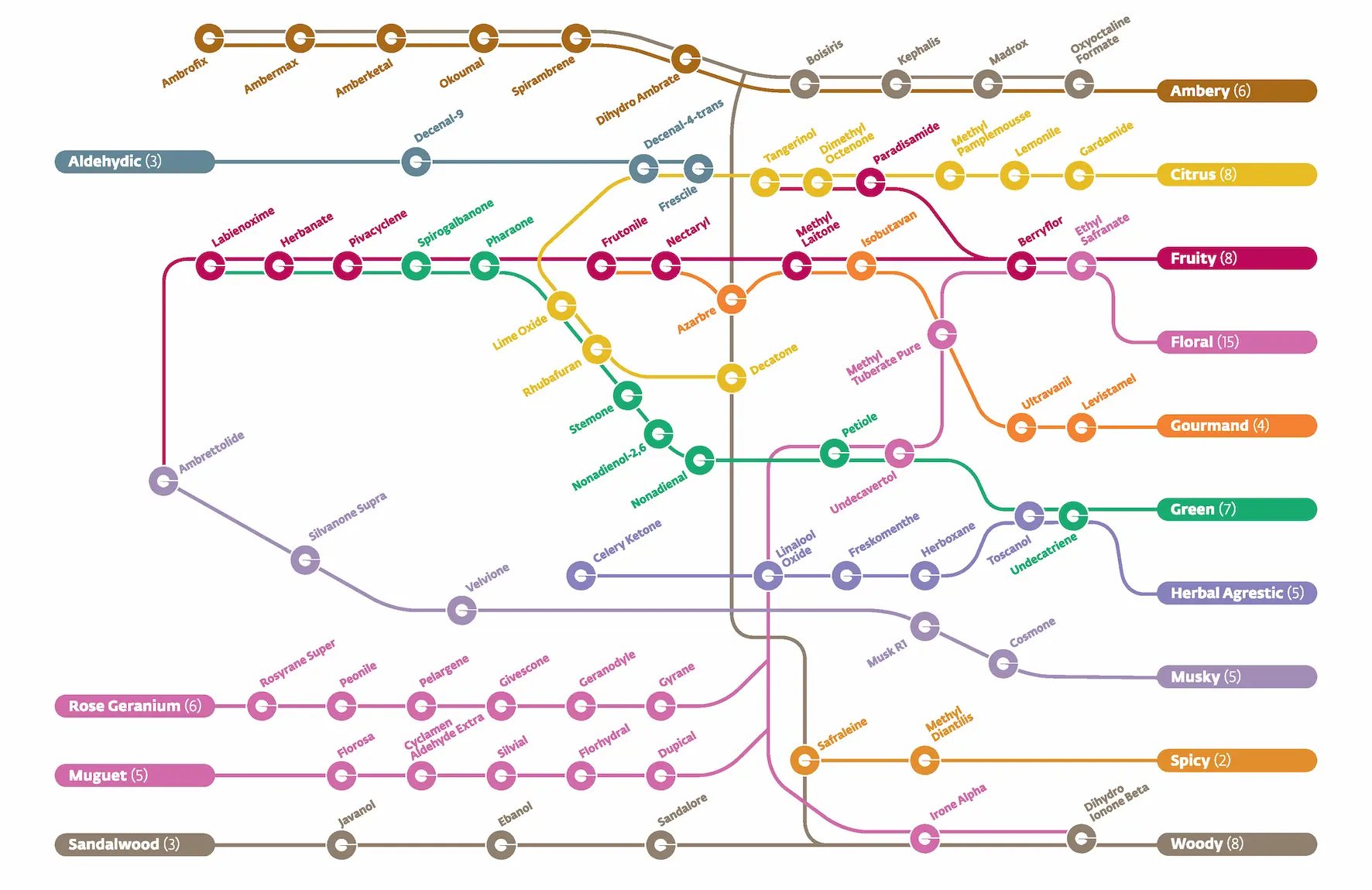Renewable carbon
Renewable carbon comes from natural sources that can be replenished in a shorttime frame, e.g. plants, bio-mass, or from recycling.
- The renewable carbon of an ingredient is assessed based on the chemical and/or biological process(es) used to make the ingredient and the origin of the starting raw materials that in some way form part of the ingredient's carbon skeleton. The number of carbon atoms that are from a natural origin (e.g. botanical) is expressed as a percentage of the total number of carbon atoms in the ingredient molecule. Givaudan defines naturally derived substances as those composed of >50% renewable carbon. This is line with ISO 16128-1.
- Dilutions: calculated based on data for the individual ingredient and solvent. It is the sum of the relative concentration of an ingredient and solvent multiplied by their corresponding renewable carbon content. This is in line with ISO 16128-2.
|
≤50% renewable carbon
≤50% renewable carbon
|
Biodegradability
This is the breakdown of organic matter by micro-organisms, such as bacteria and fungi. Key removal process of organic chemicals in the environment.
- Biodegradation is determined according to OECD test method guidelines. A readily biodegradable material has achieved >60% in a ready biodegradation test within 28 days and passing the 10 day window criterion following OECD 301, 310 and equivalent ISO guidelines. An inherently biodegradable material has achieved >60% in a ready biodegradation test within 28 days but failed the 10 day window or has achieved >60% in a ready test that has been extended beyond 28 days or has achieved >70% in an inherent biodegradability test e.g. OECD 302C test.
- Dilutions: assessed based on data for the individual ingredient and solvent, applying the worst case.
|
Readily biodegradable
Readily biodegradable
|
Ecotoxicity
This is a measure of the intrinsic toxicity of the ingredient to aquatic species.
- Internationally recognised testing guidelines (e.g. OECD) were applied, performed to Good Laboratory Practice standards. Our materials have been classified as non- hazardous, harmful (Acute 2, 3, Chronic 3, 4), or toxic (Acute 1, Chronic 1, 2). The environmental hazard categories (Acute 1, 2, and Chronic 1, 2, 3, 4) are based on the Globally Harmonized System of Classification (GHS).
- Dilutions: evaluated as pure material.
|
Harmful
Harmful
|
Waste
This indicates the amount of waste generated while manufacturing the ingredient.
- This is a comparison between the Process Mass Intensity (PMI) of the ingredient and the expected value for a product of a similar tonnage. (Process Mass Intensity is the total mass of materials needed to make a set quantity of product). This assessment is based solely on activity that takes place within Givaudan (suppliers and contractors are not covered).
- Dilutions: evaluated as diluted material.
|
Meets expectations
Meets expectations
|
Chemistry
This determines if the process uses chemistry that is environmentally disfavoured.
- A list of disfavoured chemistries was prepared based on ISO 16128 and customer feedback. This parameter indicates if any of the chemistry used to make the ingredient is on this list: short chain alkyl halides or alkyl sulphates (<5 carbons), isocyanates, nitration, alkyl chlorination, sulphonation, silylation, ethylene oxide, phosphorous oxychloride, or stoichiometric transition metals. This assessment is based solely on activity that takes place within Givaudan (suppliers and contractors are not covered).
|
Not on the disfavoured list
Not on the disfavoured list
|
Solvents used
This is an assessment of the environmental impact of the solvents used in the process.
- Solvents are categorized as either favoured, standard or disfavoured. Favoured solvents are listed in the ISO 16128 standard. Disfavoured solvents are those requiring Authorisation under REACH (or going through the process to be Authorised). If a solvent does not fall into either category, it is treated as “standard”. The category is determined by the least favoured solvent used in the process. This assessment is based solely on activity that takes place within Givaudan (suppliers and contractors are not covered).
- Dilutions: evaluated as diluted material.
|
Standard solvents
Standard solvents
|
Process complexity
This measures the number of steps in the chemical process.
- A simple process has 1 chemical step, standard process has 2-3 chemical steps and a complex process 4 or more. This assessment is based solely on activity that takes place within Givaudan (suppliers and contractors are not covered).
- Dilutions: evaluated as pure material.
|
Simple
Simple
|
Olfactive impact
This is based on odour value as measured by Givaudan as a combination of Odour Detection Threshold and Vapour Pressure.
- Dilutions: evaluated as pure material.
|
Impactful
Impactful
|
Social responsibility
This refers to the SMETA or equivalent protocol for our manufacturing sites.
- The SMETA methodology assesses a manufacturing site based on leading international standards around labour, health and safety, environment and business ethics aspects. To demonstrate our efforts and progress on these conventions and principles, we participate in Supplier Ethical Data Exchange (Sedex) forum and follow its Sedex Members Ethical Trade Audit (SMETA) assessment programme which has been in place at Givaudan since 2008.
|
Audited with open points
Audited with open points
|












